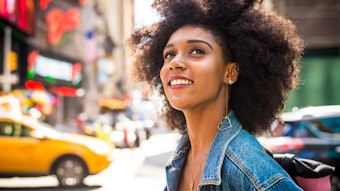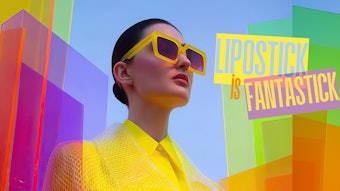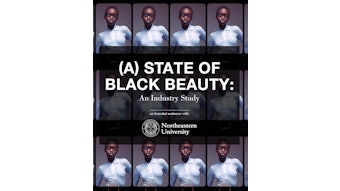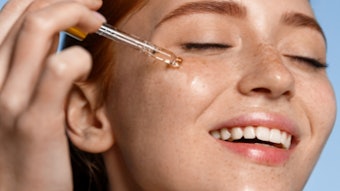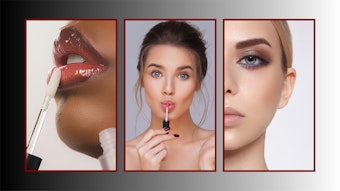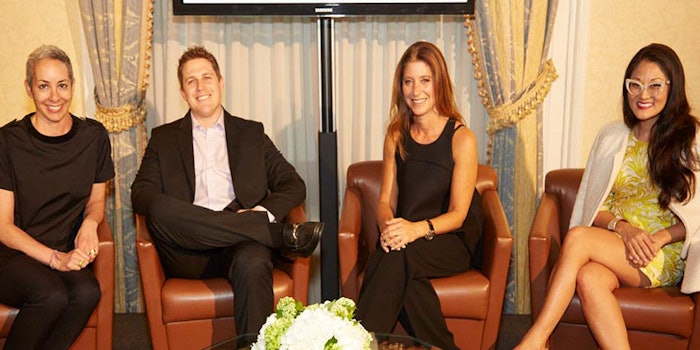
Laura Elkins, senior vice president of global and North America marketing at M·A·C Cosmetics, noted that the brand’s strong Latina fan base was eager for a collection that specifically represented its community.
Eighty-two percent of women feel that social media has impacted the definition of beauty.
The Selena collection was co-developed by Selena’s sister and was inspired by the contents of the late singer’s makeup bag. The launch of the collection took place in Selena’s home town of Corpus Christi, Texas, featuring 15,000 consumers and a range of non-paid influencers who generated massive amounts of free earned media online and in social channels.
This is why social matters.
The first place that a consumer interacts with a brand is through social media, Elkins noted. As a result, protecting brand voice is more important and harder than ever. Elkins spoke as part of Cosmetic Executive Women’s recent New York event, Turning Social Media into Sales, which focused far beyond simple consumer conversion, and eventually expanding to a broader view of how the cosmetics industry is fundamentally changing.
How Trends Work
Eighty-two percent of women feel that social media has impacted the definition of beauty, said Karen Moon, co-founder and CEO of Trendalytics. She added that today’s beauty ideal is authentic—not flawless—and that today’s product searches are solution-centric, not branded, meaning consumers are more likely to look up “acne treatment” rather than, say, “Proactiv.”
Moon’s firm monitors product-specific searches on platforms such as Google, as well as influencers and brands to discover what’s influencing the beauty market. What the company is finding, according to Moon, is a significant shift in the way trends emerge and fade.
While the general process of trend-buildup has remained steady, the rate at which these trends drop off has accelerated.
For example, the face mask category, arguably one of the hottest beauty segments today (growing 39% in 2014, according to Mintel.com), grew in tandem with rising social buzz and product search frequency. Moon noted that there were of course early adopters of the products, but it was the emergence of celebrity influencers that made the category truly boom.
Still, said Moon, mask penetration remains low, creating a strong opportunity, boosted by the category’s accessible luxury status, wide variety, novel ingredients (ex: snail and egg) and Instagrammability.
Similarly, color correctors share many of the same attributes that make masks so exciting, including their Instagram-friendly format. The segment has grown 20-fold year-over-year in terms of social buzz, Moon explained. At the same time, the frequency and number of color corrector searches online are rising. As a result, brands can and perhaps should emphasize those corrective properties in their products to capture consumer interest.
It is very difficult for brands to judge which trends have staying power.
Moon highlighted other opportunities revealed by social buzz and search statistics, including magnetic lashes, lash extensions, lash applicators and lash decorations, which could potentially turn the category into the next nail art phenomenon. But will it be?
Trend Cycles Creating New Business Models
Critically, Moon noted that while the general process of trend-buildup has remained steady, the rate at which these trends drop off has accelerated. Elkins explained that, as a result, it is very difficult for brands to judge which trends have staying power. For instance, marketers are handling micro trends, like a specific lipstick taking off in Korea, that are difficult to anticipate.
Conor Begley, co-founder and president of Tribe Dynamics, noted that brands such as ColourPop are incorporating a fast-fashion model typified by clothiers such as H&M, which is remodeling the traditional product-development process.
Digital has greatly lowered the cost of distribution.
No longer do these innovators work with long lead times, nor are brands alone setting the trends. Instead, some fast-fashion-style businesses are able to respond to an emerging trend and launch a product in a matter of weeks, scaling up later as needed.
Begley added that this type of business model has become easier to do because digital has greatly lowered the cost of distribution. The result is rising consumer demand for newness and variety, resulting in more brands and segmentation in beauty.
Moon noted that early innovators in the beauty space are able to grow to sales in the tens of millions of dollars in a very short time as a direct consequence of these market forces.
It is difficult to connect a specific online video view directly to a consumer’s initial purchase.
While some brands let product go out of stock to feed demand, many others are working to find new ways to manage inventory, said Elkins. At M·A·C, dedicated teams receive and asses trend alerts to keep track of how big an emerging segment might become, as well as what it means for the supply chain and various markets.
In the end, Elkins explained, supporting innovation and new product development comes down to pure business planning.
Complex Path to Purchase
Moon noted that brand executives are looking for more value out of social media. They want to know how customers are interacting with their brands. Begley added that it is difficult to connect a specific online video view directly to a consumer’s initial purchase. In fact, that purchase might not even occur online, since many shoppers still primarily use online for replenishment.
Elkins added that M·A·C, like many brands, uses retargeted ads, Facebook and other “unsexy” tools to maintain the marketing continuity in the digital space. This actually drives a lot of sales, she said, even if it’s Instagram and Snapchat often get all the attention.
Snapchat is critical because it is beginning to absorb much of the content creation young consumers used to engage in on Instagram.
Moon pointed to a recent Google study of consumer touchpoints on the path to purchase. The analysis*, which is worth a read, explains that the importance of any one resource depends on the market, size of company and region, among other factors.
In general, however, Google found that the interactions in order of farthest to closest to final purchase are: social display, generic paid search, organic search, referral, brand paid search and email.
Social Never Rests
Last year, writing for Global Cosmetic Industry, Martyn Tipping of Brand Chorus wrote, “Instagram is the place to be to catch the attention of online women ages 18–29, 53% of whom are regular users. This explains why Instagram is the dominant platform for both M·A·C and Too-Faced.”
What a difference a year makes.
Elkins noted that M·A·C launched its Snapchat presence last year, just one part of a wider array of channels the marketer engages in, including WeChat, Facebook and, of course, Instagram. Begley explained that Snapchat is critical because it is beginning to absorb much of the content creation young consumers used to engage in on Instagram.
Marketers are faster to adopt emerging platforms and finding success on their own vertical media properties
Snapchat currently has 150 million active daily users, 60% of which contribute content. Currently, the platform is yielding about 10 billion daily video views. According to Mediakix.com, 60% of U.S. smartphone users between the ages of 13 and 34 are using the platform—the sweet spot for beauty marketers seeking out those ever-so-important millennials.
Preserving the Brand Voice
Elkins explained that her marketing teams continually work to balance brand, consumer and influencer voices in the social space. This becomes exponentially more complicated as M·A·C is sold in more than 100 countries.
The brand, which does all of its own creative in-house, once populated its social feeds solely with M·A·C-created content. Today, like most marketers, its social presence is a mix of brand, influencer and consumer content.
Brands are media companies.
M·A·C’s approach is something of a hybrid, deputizing internal and industry makeup artists, as well as beauty bloggers, emerging fashion powers and even musicians to produce content. Currently, the brand boasts 20,000 internal influencers from counter level on up who produce content for social feeds, typically on a theme such as Halloween or around a specific event. These internal influencers post content to their own channels, which are reposted by M·A·C.
The effort has yielded more than 3.4 billion impressions from M·A·C’s latest “artist challenge,” creating both social buzz and giving artists a moment in the spotlight. Senior makeup artists, some of which have hundreds of thousands of followers on platforms like Instagram, have created video content for M·A·C.
Rapid Growth
M·A·C is devoting more and more resources to social media, said Elkins, in part because the brand has twice the number of Instagram followers that it had one year ago. More importantly, its Instagram engagement rate is outpacing that of follower growth, translating into millions of dollars of earned media value for the brand. To achieve these results, Elkins noted that M·A·C needed to be nimble and open to change.
Most platforms are increasingly moving toward a paid-boost model by changing their algorithms.
The Fragmented Future
Brands are media companies, said Moon. As a result, just as brands and product segments are proliferating, so too are digital and social media outlets, including augmented reality (AR). While YouTube continues to grow—in part because it offers a revenue share with influencers—most platforms are increasingly moving toward a paid-boost model by changing their algorithms. Social outlets are also launching new features, such as Snapchat competitor Instagram stories.
At the same time, marketers are faster to adopt emerging platforms and finding success on their own vertical media properties—especially AR. Elkins explained that influencers are now often paid and can sometimes be viewed as less authentic by followers—they also rarely work exclusively.
Whatever the next few years bring in terms of technological breakthroughs and unique media platforms, a faster, more fragmented beauty landscape is all but assured.


